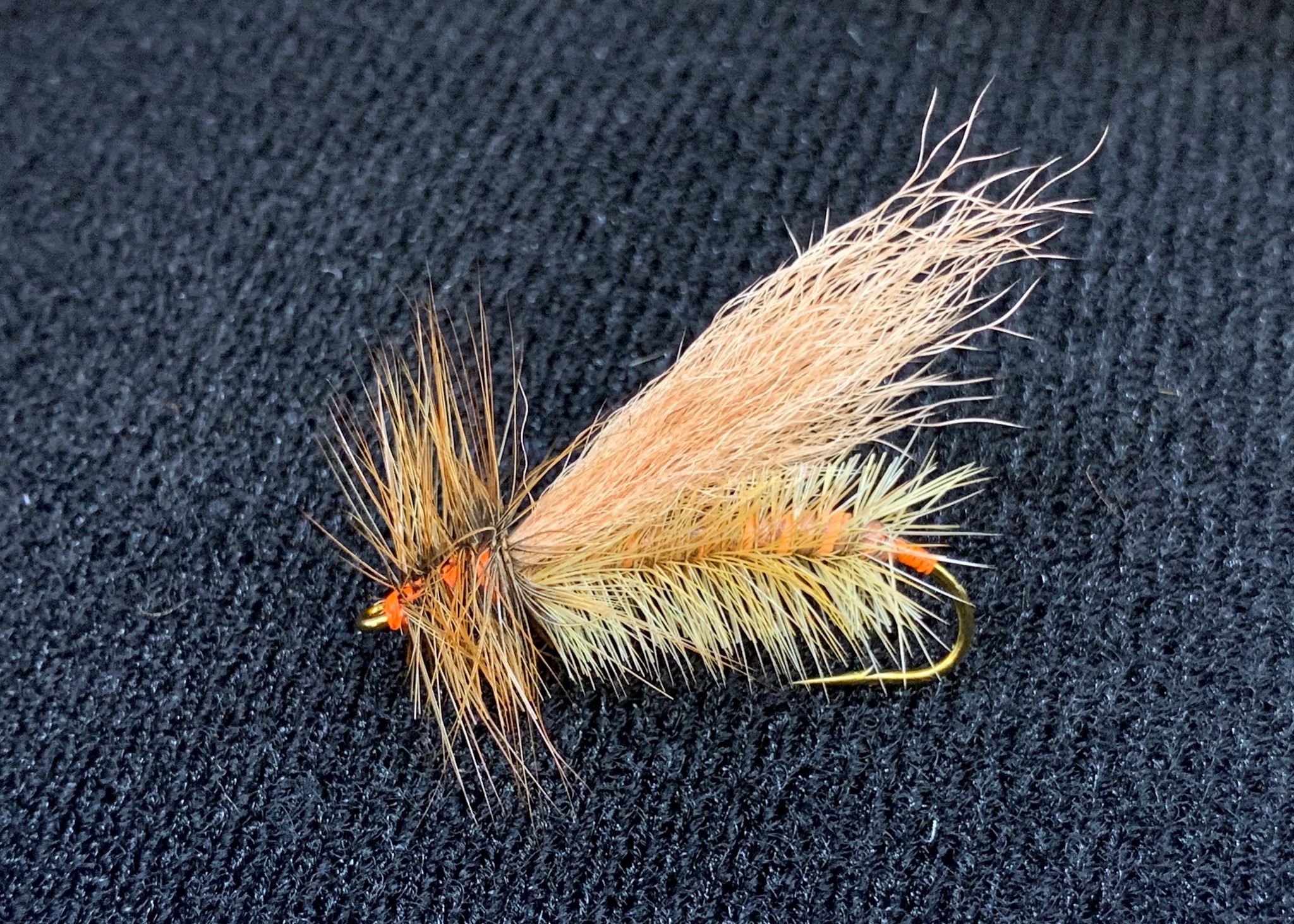The MFFR

The MFFR is one of the best Salmonfly imitations around. This secret society fly has been used by a small close lipped community of anglers on the Deschutes for a number of years.
When I started fishing the Salmonfly hatch 20 plus years ago the fly that I used I didn't invent but was an iteration of the Norm Wood's Special. The Norm Wood's special is is one of the most popular Deschutes Salmon Fly patterns ever used. It is even rumored that the Norm Wood's Special is the basis for Randall Kaufmann's Stimulator.
I started fishing the Salmonfly Hatch in the late 90’s and the fly that we fished was a Norm Wood’s variant, that Gary Hilton envisioned. We called it The Hilty Special. The Hilty Special was basically a Norm Wood’s special but it was tied on a TMC 200R, no tail, a thin body dubbed out of Angora dubbing, and a lot more wraps of hackle.
As the years went on, the fly that I tied evolved, the body, instead of dubbing, became a strip of foam colored black wrapped up the hook, ginger saddle hackle was palmered up the body with as many wraps as possible to increase floatation.
These slight changes to the pattern enabled me to envision and fish the fly like I thought it should be. It rides really low in the water just like an actual salmonfly, it has a dirty dusty black and orange coloration for the body, the wing sits low over the body.
One of the keys to success for fishing this fly is how you apply the floatant. The wing needs a thick paste like Loon’s Payette paste to make it clump together, the rest of the fly gets a normal floatant like Loon’s Lochsa.
You should give this fly a try, it might prove to be more effective than that Chubby Chernobyl you’ve been fishing the past couple of years
 |
 |
 |
| Commercially tied Norm Wood’s | Norm Wood’s special tied by Norm | MFFR tied by Josh Linn |
Recipe
Hook: TMC 200R size 4
Thread: 10/0 Orange
Tail: Orange thread wraps
Body: 2mm orange foam cut into 3/16” strip with the top and bottom colored black with a sharpie
Hackle: Ginger saddle hackle palmered up the fly with as many wraps as possible- 15-20 wraps
Wing: Tan calf tail
Head: Orange thread
Hackle: brown neck hackle with as many wraps as possible
Instructions
1. Start by laying down a base of thread, when I get to the hook point I try to build up a tail of thread so there is an Orange tail that extends from the barb for about 1/4”.
2. Tie in the saddle hackle by the tip above the barb of the hook.
3. Then move the thread to the front of the fly and tie in the strip of foam about 3/8” from the eye of the hook, and wrap the thread back to the point where the hackle is tied in, and and then wrap the thread up to the front of the fly. Lay down a base of thread so that when you tie off the foam it will bite into the thread.
4. Wrap the foam forward to where it was tied in. Try to wrap the foam edge to edge so it is alternating orange and black and looks segmented
5. Palmer the hackle up the body using as many wraps as possible, try to make 15-20 wraps of hackle before you tie it off.
6. Lay down a good base of thread so the calf tail will have something to stick to when it is being tied in and to stop there from being an abrupt drop off from where the foam was tied in.
7 Before you tie in the calf tail lay the scissors down on top of the fly and trim some of the hackle fibers from the top side of the fly so the calf tail can lay down.
8. Tie in the calf tail by the butt ends and lash them all down so it builds up a thread
9. Tie in the hackle by the stem and wrap as many wraps of hackle as possible, typically 5-10.
10. Lock in the hackle, trim, and whip finish
Tying Notes
-Color the 2mm foam on both sides with a black sharpie and then cut it into strips, approximately 3/16" wide. When you tie in the foam do not pull it very tight, so it builds a tapered body and still floats well.
-After you lock down the saddle hackle on the end of the foam, build up a nice taper with the thread so there is not a curb or a shoulder where the foam ends. That way when you tie in the wing it will more easily lay down low over the fly
-Once you tie in the saddle trim the hackle fibers on the top side out of the way so the wing will lay down flat
-Do not stack the wing so it has a little more natural taper, try to leave the wing a little long, so it extends past the bend of the hook
 |
| MFFR Fly Tying Kit |
The MFFR Salmonfly tying tutorial from Joel La Follette on Vimeo.




